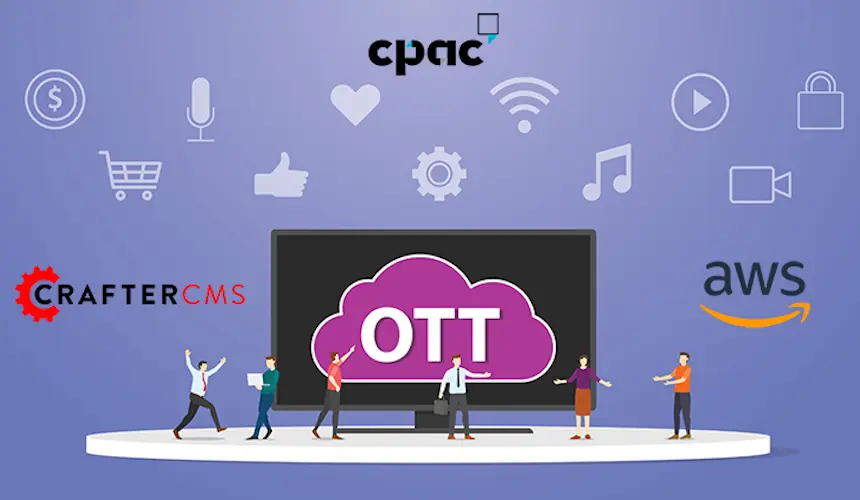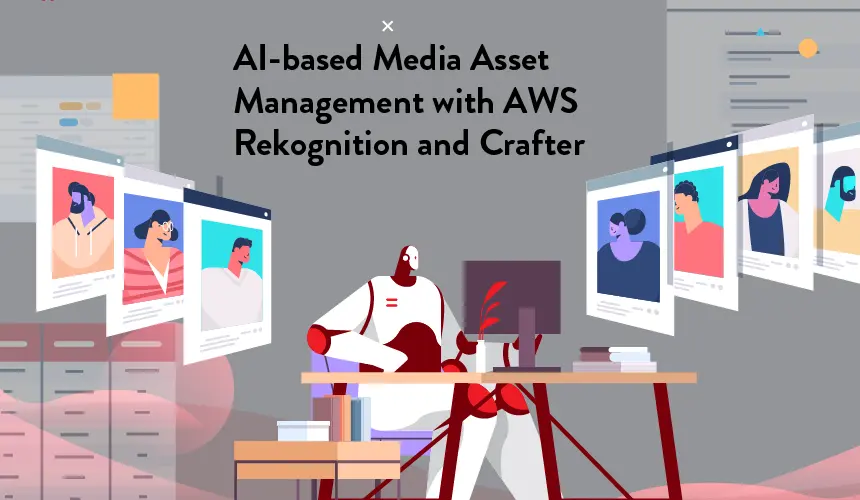The Future of CMS (and Overcoming Problems in Content Management)

Sara Williams

From simple content management for static websites to complex web experience management platforms for enterprise websites to headless CMSs that publish content to multiple channels to legacy digital experience platforms (DXPs) that orchestrate the entire customer experience, CMSs have existed in one form or another for quite some time. However, too often the CMS is the bottleneck, throwing up roadblocks and slowing down work. As related technologies advance and new ones are created, we must focus on improving content management system capabilities that drive efficiencies and productivity improvements for both developers and content authors.
The Current State of Content Management
Content management has undergone numerous changes over the years as new technologies emerge, customer expectations increase, and companies continue to push the boundaries of innovation. Once meant only to manage content on a website, the modern CMS is now expected to help companies create, manage, edit, and publish to mobile apps, e-commerce experiences, digital kiosks and signs, VR headsets, and several other digital experiences.
Tools are being blamed for clunky implementations, causing problems for the key stakeholders who use the CMS daily. Before we can look toward the future of the CMS, we need to understand the issues facing CMS users today, and the implementation problem is a big one.
Poor Content Authoring Experiences
Content authors, developers, and operations staff, including IT teams, HR, finance, and other operations, must be able to use the CMS to perform their tasks, but that isn’t always the case.
Authors need a CMS configured with content models that appropriately reflect the website or any other experience they manage. To accomplish this, the CMS needs a robust authoring interface. Unfortunately, many CMS implementations have a UX interface that hasn’t been tailored to the needs of the company’s content authors, which often happens with headless CMS implementations.
Next, these authors blame the CMS and beg for a return to traditional solutions like WordPress, Drupal or Adobe AEM when, in reality, the problem wasn’t in the authoring capabilities but in how the solution was configured and implemented.
Technology Dependencies
For developers, working with proprietary technologies and platforms is one of the biggest challenges. These solutions restrict the tools and frameworks developers can use, making them dependent on specific technologies.
Operations Challenges
The operational challenges plaguing CMS implementations today include high maintenance costs and issues scaling to meet new requirements or seizing opportunities. Anyone working in the CMS also notices a lack of continuous publishing because the CI/CD process doesn’t include content or the CMS.
Vendor lock-in is another issue for businesses working with proprietary technologies that frequently rears its head just when companies begin to feel that shifting to a composable architecture might be a better way forward.
The Bigger Problem
Many businesses struggle with content silos and the lack of cohesion between developers and content authors. Their workflows offer limited collaboration, and each group’s problems become amplified. In database-oriented CMSs, this happens frequently, and there are issues syncing content, moving content and code between different environments, and a lack of scalability for larger deployments as the business grows.
Issues such as these are preventing businesses from maximizing their potential. So what’s the solution? Understanding and implementing the various trends set to impact the future of CMS.
Many of the problems companies face with their content management systems are often compounded, resulting in even more challenges for the internal teams working with these systems. In order to alleviate these problems and create the most appealing digital experiences for customers, enterprises must pay attention to the key trends shaping the future of CMS.
Key Trends Shaping the Future of CMS (and Resolving Current Content Management Issues)
1. Headless Architectures
Headless CMSs have been around for a few years, but their growth has accelerated since the turn of the decade. While businesses might have been satisfied with publishing content to a single channel in the past, the current omnichannel environment requires the capabilities that a headless CMS can offer.
This means more flexibility and adaptability to respond to changing technologies and market conditions. Moreover, headless websites have been shown to improve performance in PageSpeed scores and Core Web Vitals, crucial factors in Google search engine rankings and an engaging customer experience.
2. Composable DXPs and Digital Experience Composition
In recent years, enterprises have turned to digital experience platforms (DXPs) to handle their customer journeys from end to end. While content management systems remain a critical component, they aren’t the only component, as customer journey mapping, personalization, analytics, commerce, and other packaged business capabilities (PBCs) are also required.
With these platforms, it’s possible to educate and engage audiences and deliver value for the business. However, as Forrester explained, “customer obsessed brands with a future fit technology strategy compose their own DXP using parts from multiple vendors, selected to deliver their distinct digital strategy.”
In order to build composable DXPs, digital experience composition (DXC) is a new approach that is growing in popularity. It refers to a seamless way to handle digital experience development and delivery using headless, decoupled, and composable tools. Extending from frontend as a service, no-code tools, and visual page builders, DXC can be used to compose digital experiences from best-of-breed components such as content, customer journey mapping, personalization, analytics, and commerce.
With DXC, business practitioners can streamline day-to-day activities and increase productivity and the results prove it. According to the State of Web Development 2023, 60% of respondents have achieved higher productivity, and 49% have seen an increase in site performance when building composable sites compared to using legacy architectures.
CrafterCMS leverages these concepts and offers a composable platform for both the content authoring experience, and the end-user experience. With its API-first decoupled architecture extensible plugin framework, and Marketplace of reusable PBCs, CrafterCMS enables the modern enterprise to build composable DXPs tailored to a wide variety of digital experiences (websites, mobile apps, e-commerce, microsites, OTT video, AR/VR, digital signage, and more.)
3. Generative AI
2023 was the year when artificial intelligence (AI) was fully introduced into the business world, and CMSs have integrated the technology into their workflows. Leading CMS solutions have leveraged generative AI and integrated public GPTs to allow users to easily generate new ideas, duplicate content across channels, analyze content for patterns, and enrich it with images and other media. With the continued integration of AI acting as copilots for developers and content authors, it will become easier to create personalized content and deliver dynamic experiences.
Translation and localization tasks can also be accelerated using AI, improving productivity and better resource management. By incorporating AI into workflows, developers can automate manual tasks and increase speed to market. For example, CrafterCMS has an ChatGPT/OpenAI integration for Crafter Studio to enable content authors to quickly generate ideas, copy images, and more, and dramatically improve the productivity of their content management processes.
4. Evolving Frontend Technologies
Headless CMSs allow developers to choose new, emerging frontend technologies to build websites and other digital experiences.
Between 2022 and 2023, Astro has shown the highest growth in both usage and satisfaction, according to the State of Web Development Survey. It tops the leaderboard in growth by a wide margin while maintaining one of the strongest growth numbers in satisfaction. Dubbed the web framework for content-driven websites, Astro offers a next-gen frontend architecture that supercharges development with automatic JS-to-HTML streaming.
Another new technology expected to grow in 2024 will be HTMX. This language provides access to AJAX, CSS Transitions, WebSockets, and Server-Sent Events directly in HTML, using attributes that enable developers to build modern user interfaces with the simplicity and power of hypertext.
5. User-Friendly CMS Interfaces
When headless CMSs were first introduced, they were developer-focused tools that offered flexibility and freedom to construct content models and digital experiences as required. However, to appeal to marketers and other content authors, CMSs are integrating more visual editing tools to become more user-friendly.
Applications like CrafterCMS’s Crafter Studio offer drag/drop experience building, WYSIWYG content editing, multi-channel preview, and more for composing digital experiences. A user-friendly, composable content authoring experience is key to improving productivity.
6. Better DevOps Integration
The challenge of coordinating between content teams, developers, and operations will see teams seek to integrate DevOps into the CMS and workflows. This DevContentOps approach is made possible with a Git-based content management system like CrafterCMS.
DevContentOps removes the barriers between software development, content creation, and IT operations teams. The cultural shift from DevOps broke down silos and led to significant changes in the way software is developed and deployed. With DevContentOps, a new cultural shift transforms how content is authored and published and how companies deliver dynamic digital experiences to audiences.
DevContentOps processes enable continuous integration, delivery, and publishing, streamlining the dev/test/release/publish cycles of content-driven applications. It fosters collaboration among content teams, software developers, and operations.
7. CMSs For Specific Use Cases
As headless CMS and composable trends continue to advance to cope with new channels, frameworks, and technologies, enterprises may wonder what happens to the traditional CMS. Although growth has stalled for these platforms, they won’t just disappear. Instead, they will be used for specific use cases such as small business or brochureware sites, blogs, and small ecommerce shops. Tightly coupled systems with proprietary technologies will still be better for single use cases, but will fail for larger enterprises that need a common platform serving up a wide variety of digital experiences.
Learn More
Paying attention to trends such as these can help enterprises prepare for the future of content management. Learn more about how CrafterCMS is solving these challenges by scheduling a custom demo today.
Related Posts

Websites Are Dead?

Mike Vertal

No-Code Experience Building for Marketers & Designers

Amanda Lee

The Future of Web Experiences: From Browsing and Searching to Conversational AI

Mike Vertal

Is Your CMS MACH-Ready? A Practical Guide for Enterprise Architects

Sara Williams
Related Resources
-

CrafterCMS at eBay: The Universal Content Platform for eBay.com
Webcast
-

Personalized Digital Experiences for a Cruise Liner
Webcast
-

Introducing CrafterCMS v4.0
Webcast
-

Modernizing Video Delivery and Content Management at CPAC, A Canadian Nationwide Broadcaster
Webcast
-

AI-based Media Asset Management with AWS Rekognition and CrafterCMS
Webcast





